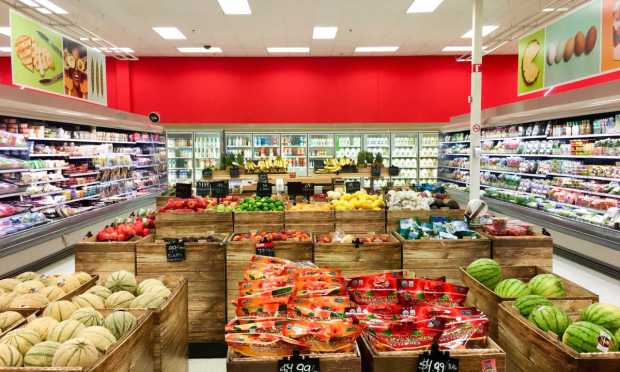Target’s Grocery Biz Grows 50%+ in 3 Years as Consumers Prioritize Essential Purchases

Target is taking a page from Walmart’s book, investing in its food business to get customers in through the doors (or onto its digital platforms) with greater frequency. The retailer shared on a call with analysts Wednesday (Aug. 17) discussing the company’s second-quarter financial results how the category has grown in recent years.
CEO Brian Cornell said Target’s food and beverage (F&B) business has grown more than 50% since Q2 2019, a $1.8 billion increase. The company has invested in growing its grocery offerings even as it has reduced its inventory in other, less essential categories in the face of inflation, he said. This shift comes in part because of the benefits the company’s F&B business presents for other categories.
“But regardless of whether a Target run begins with a need for an item in food and beverage or household essentials, to see what’s new in our beauty assortment, the pick of a toy for a birthday party, or a piece of luggage for an upcoming trip,” Cornell said, “our safe one-stop shopping experience provides an opportunity to sell items in every one of our categories on every guest visit.”
Cornell noted that the retailer’s own-brand food offerings have been performing well, with Good & Gather now a “a $2 billion brand that continues to see very strong growth,” in keeping with industry-wide shifts to private-label. With this investment in the company’s F&B business, Target has become a top-10 grocer, according to most popular rankings.
Granted, while the focus on grocery can have benefits for traffic, it can have its drawbacks when it comes to profit margins, as Walmart noted on its earnings call Tuesday (Aug. 16).
“The cost of food and fuel [and] a heavier mix of sales in food and consumables … were among the most challenging items for us at the time,” Walmart CEO Doug McMillon said. “We continue to see a heavier mix of sales in food and consumables in many of our markets, and that put pressure on margins overall.”
See also: Walmart’s Grocery Gains Could Be Mixed Blessing as Shoppers Trade Down
This is especially true as these big box retailers aim to price out competitors. Target CFO Michael Fiddelke noted on the call that the company is “really mindful of making sure that we feel good about our price gaps,” especially in food. Executive Vice President and Chief Growth Officer Christina Hennington added that the company has “a maniacal focus” on finding the right balance for pricing with “a little bit more flexibility to move with the market” in F&B categories, given that these items are “domestically replenished and bought every single day.”
Certainly, price is top of mind for most grocery shoppers. Findings from a national online study of 3,783 consumers conducted by PYMNTS last month revealed that consumers report paying 20% to 30% more for retail and grocery purchases and to eat at restaurants than they did last year, leaving many looking for ways to cut back on their food spending.
See also: Why Retailers Should Worry About Inflation but Dread the Wealth Effect
